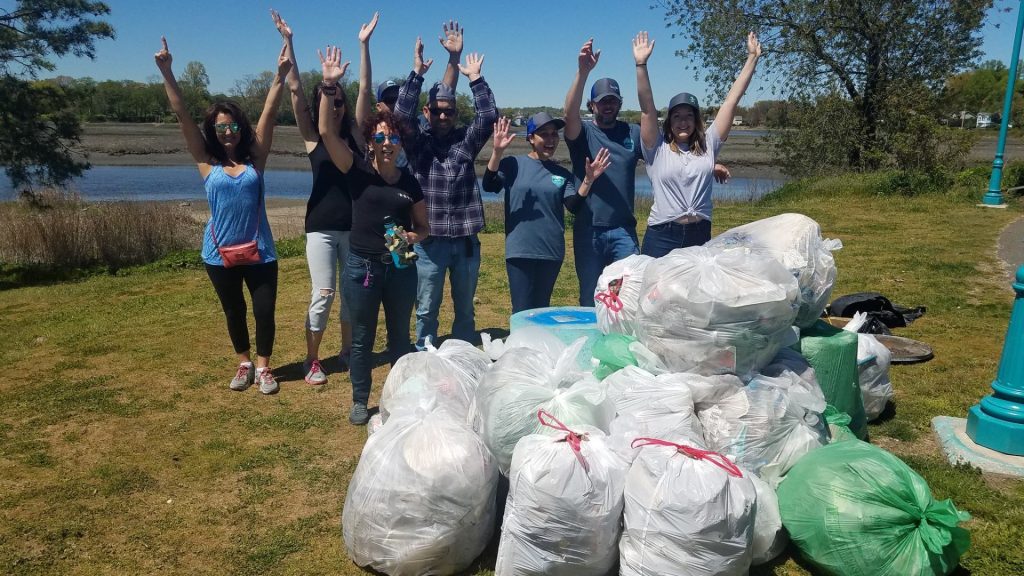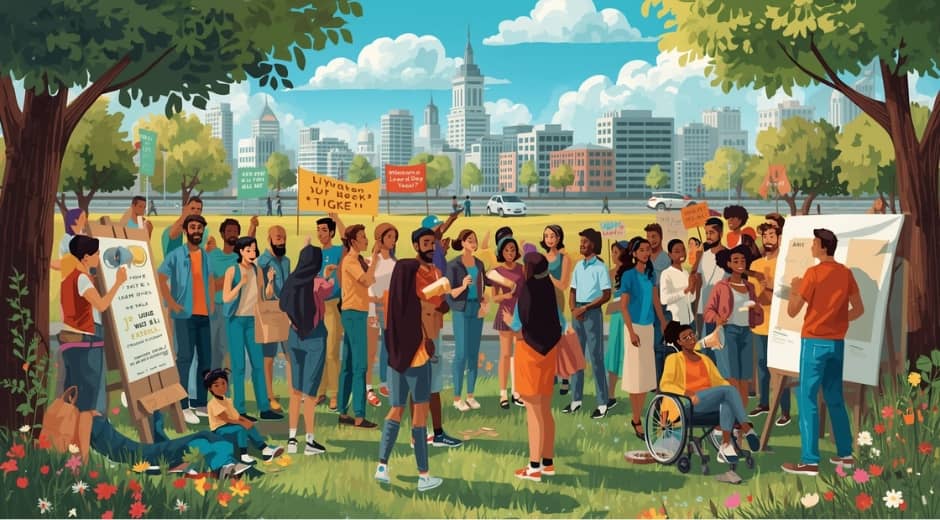Organizing a Community Clean-Up: A Guide to Civic Engagement
Organizing a Community Clean-Up: A Guide to Civic Engagement
In modern governance, decentralization is a key strategy for improving efficiency, transparency, and responsiveness. By shifting authority from central governments to local administrations, communities gain more control over decisions that affect them directly. This approach enhances service delivery and encourages citizen participation.
Understanding Local Governance
Community engagement is an essential part of building strong, resilient, and vibrant neighborhoods. Among various initiatives, organizing a community clean-up stands out as one of the most impactful activities for promoting environmental stewardship, civic responsibility, and social cohesion. By taking part in these efforts, residents not only improve their surroundings but also foster a sense of collective ownership and pride.
Understanding the Importance of Community Clean-Ups
Organizing a community clean-up is more than picking up litter; it is an act of active citizenship. Communities that invest time and energy into maintaining their public spaces tend to enjoy higher levels of social trust and participation. A clean and well-maintained environment also contributes to the physical and mental well-being of residents, reducing stress and enhancing quality of life.
Moreover, these activities can serve as educational experiences, particularly for young people. Participants learn about waste management, recycling, and sustainability while actively contributing to their community. In essence, organizing a community clean-up serves as a practical demonstration of how small collective actions can lead to significant change.
Planning Your Community Clean-Up
Successful organizing a community clean-up begins with careful planning. Here are some essential steps to consider:
-
Identify the Area: Select a park, street, or public space that needs attention. Assess the area for safety concerns and determine the volume of waste to be addressed.
-
Set Objectives: Define clear goals for the clean-up, such as reducing litter, planting greenery, or raising awareness about local environmental issues.
-
Recruit Volunteers: Engage local residents, schools, and organizations to participate. A diverse volunteer base can bring varied skills and perspectives.
-
Gather Supplies: Provide gloves, trash bags, recycling bins, and safety equipment. Ensure volunteers have access to water and first-aid kits.
-
Coordinate Logistics: Arrange for waste disposal, transportation of materials, and scheduling breaks. Collaborate with local authorities if needed.
By following these steps, communities can ensure that their clean-up initiative is effective, safe, and inclusive.
Engaging Volunteers and Building Participation
An essential part of organizing a community clean-up is volunteer engagement. Effective strategies include:
-
Social Media Outreach: Create event pages, share updates, and encourage participants to invite friends.
-
Partnerships: Collaborate with local businesses, civic groups, and schools to expand reach and resources.
-
Incentives: Offer recognition, certificates, or small rewards to motivate participation.
Active volunteer involvement not only improves the clean-up outcome but also strengthens social bonds and fosters a sense of civic pride.
Environmental and Social Impact
The benefits of organizing a community clean-up extend beyond aesthetics. Environmentally, it reduces pollution, promotes recycling, and can prevent hazards for local wildlife. Socially, it encourages collaboration among residents, builds trust, and cultivates a culture of responsibility and care.
Moreover, these events can spark further initiatives. Volunteers often feel inspired to pursue additional projects, such as tree planting, recycling programs, or community gardens. In this way, a single clean-up event can serve as the catalyst for ongoing civic engagement and positive change.
Incorporating Educational Components
Community clean-ups offer a unique opportunity to educate participants about broader environmental and civic issues. Activities may include:
-
Demonstrations on proper waste segregation
-
Workshops on sustainable practices and eco-friendly habits
-
Discussions about local governance and the role of civic responsibility
By integrating education, organizing a community clean-up becomes a holistic experience, empowering residents with knowledge and skills that extend beyond the event itself.
Leveraging Technology
Technology can enhance the effectiveness of organizing a community clean-up. Online registration tools, digital maps, and social media platforms streamline communication, recruitment, and reporting. Additionally, apps can help track waste collection, volunteer hours, and environmental impact metrics.
Integrating technology ensures that the clean-up is well-organized, measurable, and scalable, allowing communities to replicate the initiative in other areas or track long-term improvements.
Collaborating with Local Authorities
Partnering with municipal offices or local agencies can significantly amplify the impact of organizing a community clean-up. Authorities can provide support in the form of waste disposal, traffic management, and public awareness campaigns. They may also help secure necessary permits and resources, ensuring that the event adheres to safety and legal standards.
Collaboration between citizens and government strengthens local governance and highlights the importance of active participation in shaping community spaces. For insights on effective local governance strategies, visit Politicxy.
Measuring Success and Sustainability
After a clean-up, it is important to evaluate outcomes and maintain momentum. Metrics for success can include:
-
Volume of waste collected
-
Number of volunteers participating
-
Community engagement levels and feedback
Additionally, consider establishing recurring clean-up events or complementary programs, such as recycling initiatives or educational workshops. Sustainable initiatives encourage long-term civic responsibility and environmental stewardship.
For additional guidance on funding, project management, and sustainable community projects, Finance World Hub offers valuable resources for organizers and civic leaders.
Inspiring Broader Civic Engagement
Organizing a community clean-up does more than improve physical spaces; it inspires civic participation on multiple levels. Residents learn that individual actions, when coordinated collectively, can create visible positive change. This realization often leads to engagement in local decision-making, volunteerism, and advocacy, strengthening the overall social fabric.
Furthermore, clean-up initiatives provide a model for collaboration between citizens, businesses, and government. These partnerships foster trust, encourage dialogue, and showcase the tangible benefits of active community involvement.
Conclusion
Community clean-ups exemplify the power of collective action. By organizing a community initiative, residents take responsibility for their environment, build social cohesion, and cultivate a culture of civic engagement. Beyond improving aesthetics, these events educate participants, promote sustainable practices, and inspire further community initiatives.
The positive ripple effects extend to local governance, as engaged citizens are more likely to participate in decision-making, advocate for policies, and collaborate with local authorities. A successful clean-up requires planning, volunteer engagement, and partnerships, as well as the integration of educational and technological tools to maximize impact.
Ultimately, organizing a community clean-up is more than an event—it is a catalyst for environmental stewardship, social responsibility, and enduring civic engagement. For more resources on sustainable project management and funding strategies, organizers can explore Finance World Hub, while insights on civic participation and governance can be found at Politicxy.
By participating in and supporting such initiatives, communities not only improve their immediate surroundings but also empower residents to become active, informed, and responsible citizens. Every clean-up, no matter the size, strengthens connections, inspires change, and demonstrates the transformative potential of civic engagement.
The Pulse of Politics

Sanctions Policy As A Non Military Tool Of Pressure
Sanctions Policy As A Non Military Tool Of Pressure

Information Warfare In Politics And The Fight For Truth
Information Warfare In Politics And The Fight For Truth

Democratic Backsliding, Early Warning Signs To Watch
Democratic Backsliding, Early Warning Signs To Watch

Policy Experiments Tested Locally Before National Adoption
Policy Experiments Tested Locally Before National Adoption

Voting Access Barriers And How They Affect Turnout
Voting Access Barriers And How They Affect Turnout













